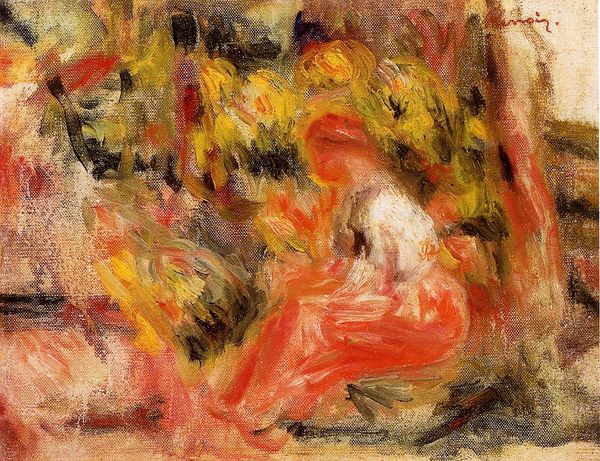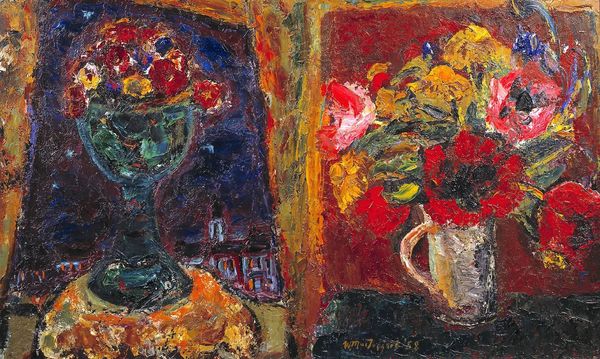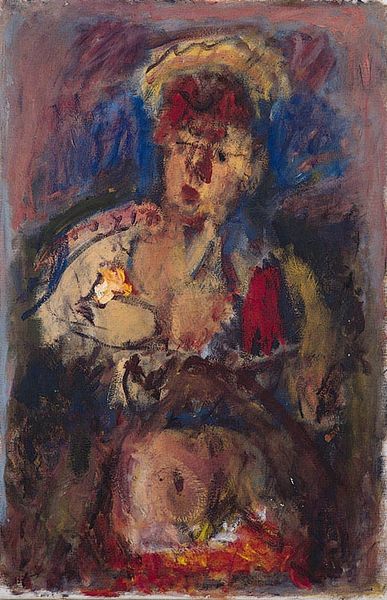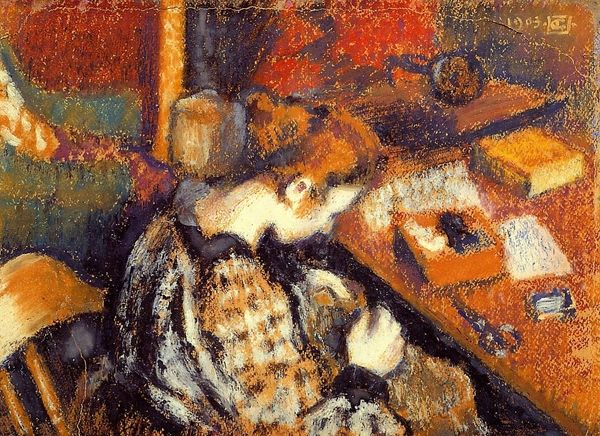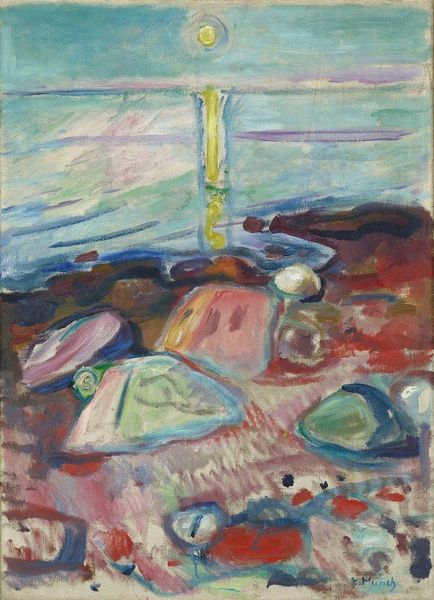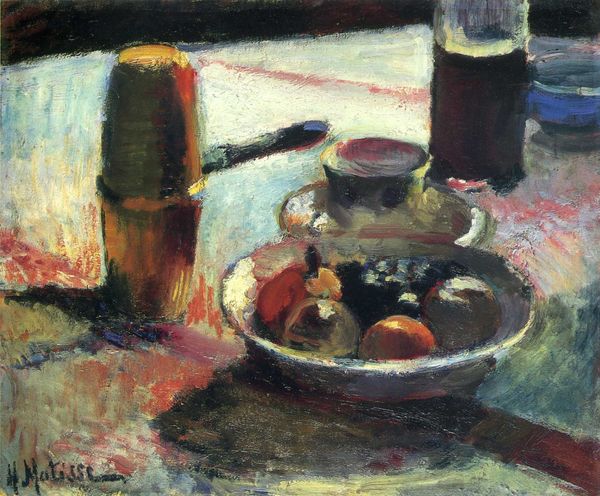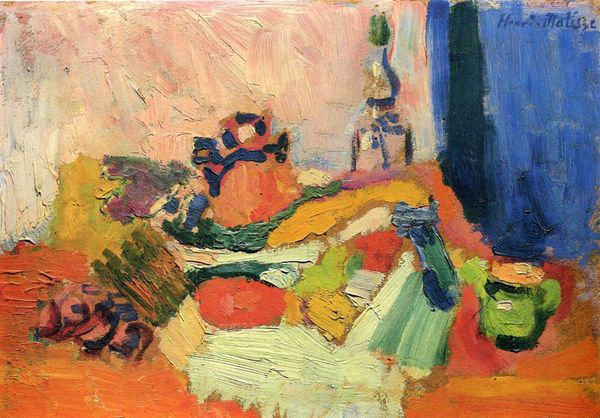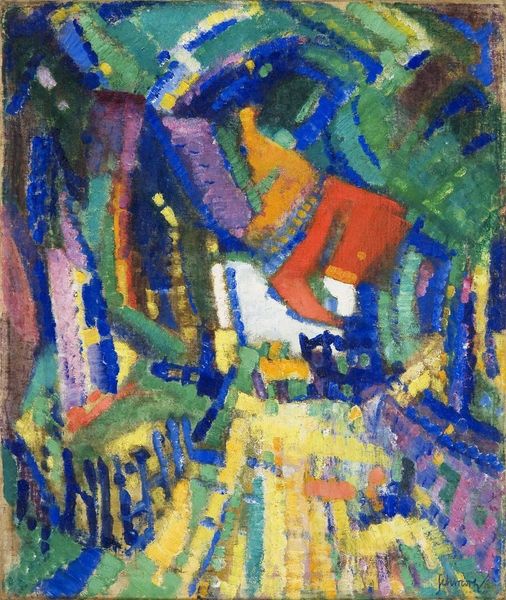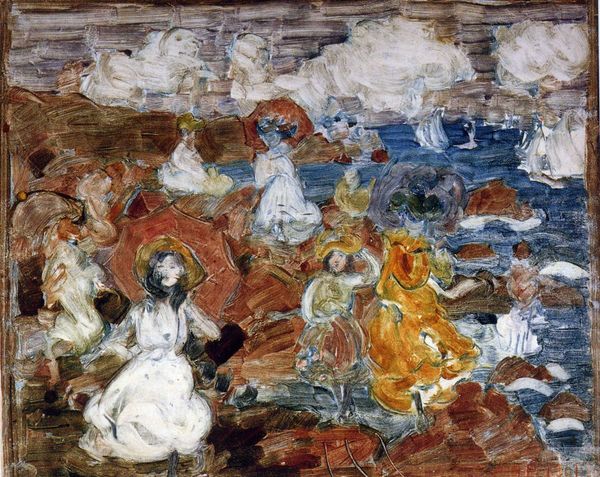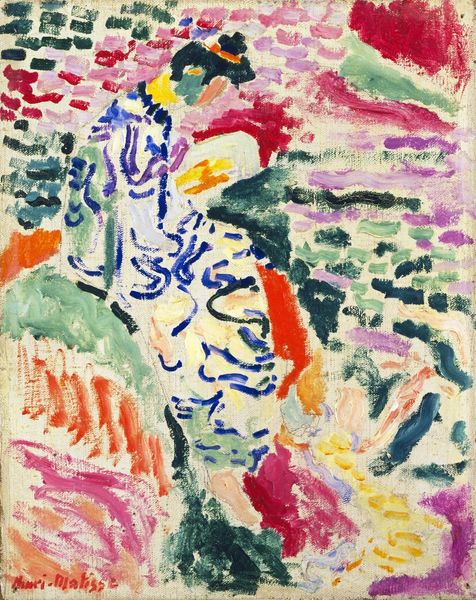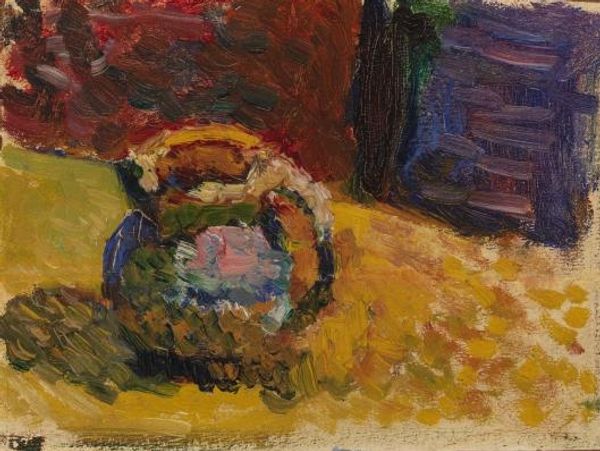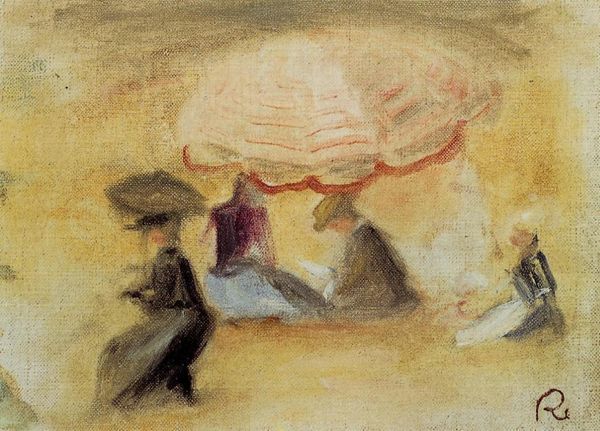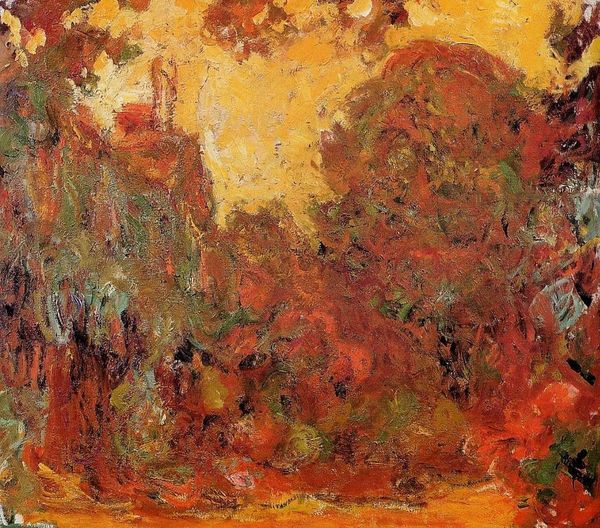
Copyright: Public domain
Editor: We're looking at Renoir's "Sugar Bowl" from 1905, an oil painting. It feels very soft and almost indistinct; the shapes kind of melt into each other. What strikes you about its composition? Curator: The lack of clear definition is indeed crucial. Notice how Renoir abandons precise lines, opting instead for a symphony of colour to suggest form. The brushstrokes themselves are quite visible. How do they affect your understanding of the painting? Editor: They make it feel very immediate and tactile, like I can almost feel the texture of the paint. But the lack of sharp edges is also a bit disorienting. Curator: Exactly. This disorientation serves a purpose. Renoir privileges the act of seeing over the object seen. It is less about the sugar bowl itself, and more about the optical experience it provides. Do you notice how light plays across the surface? Editor: Yes, the colors are so vibrant in some areas, and then almost faded in others. It’s interesting that even though it's a simple subject, there are many variations within the single color used, like for example blue. Curator: Precisely! The interplay of light and color generates an emotional response more so than an intellectual one. The structural foundation lies within its ability to stimulate visual pleasure. Can you see that it has roots in the Baroque period, but its style is modern? Editor: I think so! I'd never thought about it that way before. Curator: I'm pleased you found the visual elements to speak for themselves. Editor: This really opened my eyes to how much can be conveyed through pure form and color.
Comments
No comments
Be the first to comment and join the conversation on the ultimate creative platform.
